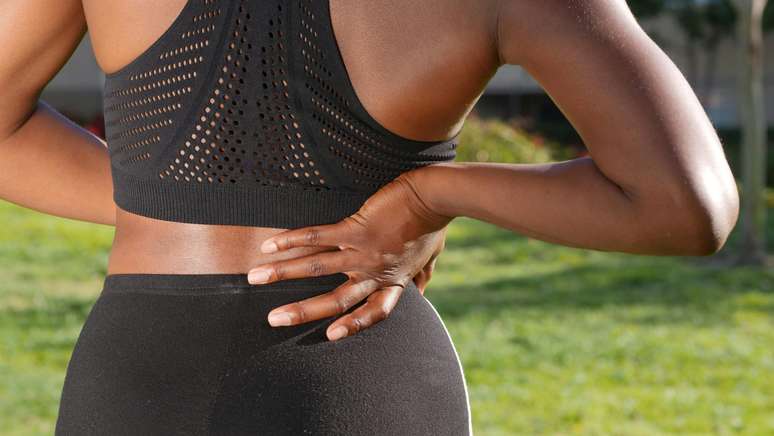And why you should be careful when doing weight training Herniated disc is an injury to the intervertebral cartilaginous discs. They work as shock absorbers and prevent friction and direct, painful contact between the vertebrae. “When one of these discs shifts, i.e. leaves its axis, it can compress the spinal cord or […]
And why you should be careful when doing weight training
Herniated disc is a lesion of the intervertebral cartilaginous discs. They work as shock absorbers and prevent friction and direct, painful contact between the vertebrae. “When one of these discs is displaced, that is, moves off axis, it can compress the spinal cord or nerves. This causes pain in the spine, radiating to the arms or legs, loss of sensation, tingling, difficulty walking and even the loss of control of the urinary tract”, explains neurosurgeon and spine specialist Guilherme Rossoni.
But what causes a herniated disc?
According to Rossoni, various factors can be highlighted as causes of disc herniation. Some of them are genetic factors (heredity), obesity/overweight, smoking, poor posture, repetitive movements when bending the spine, carrying excessive weight and the action of other biomechanical factors, which cause wear and tear over time.
Increasingly widespread among young people
Over the years, herniated discs have increasingly affected young people. The reason is the overload performed in daily activities and the lack of regular physical activity, as well as bad postural habits in daily life and at work. “People between the ages of 25 and 45 have a higher incidence of the disease, which is the third leading cause of early retirement in our country.”
Because of age and harmful habits, as they get older, people who have a herniated disc often don’t know they have it, or they know it but are asymptomatic. “The problem is that they tend to suffer from the progressive worsening of the hernia. The wear of the disc increases, forming the famous parrot beaks (osteophytes) and allowing friction between the vertebrae (scraping of bone on bone)”, underlines.
What is the risk of bodybuilding?
The neurosurgeon says that some exercises should be avoided, especially weight training, as it worsens the pain and causes new acute attacks. “Exercises such as squats with bars on the back causing direct compression of the vertebrae, exercises performed standing with bars, dumbbells or your own body weight – known as Stiffs – focus tension on the vertebrae, four-support glute exercises causing overload on the spine, among some others that can harm and aggravate the herniated disc patient.”
Calm! You can still train!
The doctor recommends that people who have a herniated disc inform a physical education professional at the gym for follow-up. «It is worth noting that you can and should replace some weight training activities with other exercises. Physical activity is essential to everyone’s health, including those with herniated discs. The key thing for people with back problems is to strengthen the muscles of the back, abdomen, limbs, improve flexibility, stretching.”
For Bruno dos Santos Silva, technical manager of Smart Fit, when we refer to changes in the spine, the action of the stabilizing muscles of the hip, core and trunk is fundamental and should be a primary action in the treatment of these disorders spinal. . “First we need to understand that even in a painful situation, movement/mobility through the activation of these stabilizing muscles will already cause relief.
A passive stretching strategy of these structures also aids in the treatment process resulting from exercise. Therefore, strategies within a physical activity protocol for people with herniated discs must accommodate situations within the exercise program. Some examples are: myofascial release, lengthening and joint mobility of the muscles that stabilize structures such as the core, hip and trunk, taking into account the primary strategies within physical activity. We cannot exclude situations such as resistance exercises aimed at strengthening muscles, which should be included in the program as a secondary strategy of the protocol,” he adds.
“It is worth remembering that it is essential to control risk factors for spinal problems and diseases: especially sedentary lifestyle, obesity and smoking,” he emphasizes.
Herniated discs are treatable
The treatment, which in principle serves to relieve pain caused by inflammation, relax contracted muscles and restore mobility to the patient, can be included in targeted physical activity, such as physical therapy, pilates, weight training and other. «In the clinic, therapeutic blocks of pain and inflammation can be carried out, mini-invasive procedures which consist of the infiltration of drugs such as anaesthetics, corticosteroids and anti-inflammatories. Approximately 90-95% of patients do not require surgery. it is indicated only in the absence of response to the aforementioned therapies or in the presence of warning signs/symptoms such as, for example, loss of neurological function and difficulty in voluntary control of urine and feces”, explains Rossoni.
Source: Terra
Ben Stock is a lifestyle journalist and author at Gossipify. He writes about topics such as health, wellness, travel, food and home decor. He provides practical advice and inspiration to improve well-being, keeps readers up to date with latest lifestyle news and trends, known for his engaging writing style, in-depth analysis and unique perspectives.








